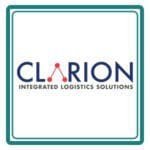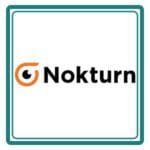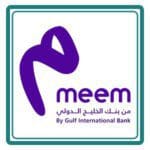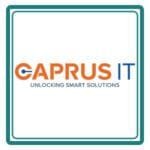ISO 27001 Information Security Management System – Clause 4 Overview and Audit Guidelines

Introduction
ISO 27001:2022 is the international standard for establishing, implementing, maintaining, and continually improving an Information Security Management System (ISMS). Clause 4 of this standard focuses on understanding the organizational context, identifying interested parties, determining the ISMS scope, and maintaining the ISMS framework. Properly addressing these requirements is crucial for a strong and resilient ISMS that aligns with business objectives and regulatory obligations. This document provides a detailed overview of Clause 4 and its audit considerations to ensure compliance and effectiveness.
What is in clause 4 of ISO 27001 and how to audit?
Clause 4. Context of the Organization
Annex SL 4.1: Understanding the Organization and Its Context
Requirement
The organization shall determine external and internal issues that are relevant to its purpose and that affect its ability to achieve the intended outcome(s) of its ISMS management system.
Plain English Explanation
Annex SL Clause 4.1 requires organizations to evaluate relevant internal and external issues that may impact their ability to meet objectives. By defining these issues, organizations can establish a clear direction for their management system framework. The key stages include:
- Understanding the external context
- Understanding the internal context
- Understanding the purpose and intended outcome of the MSS
- Analyzing factors affecting these objectives
ISMS Standard Requirement
ISO/IEC 27001:2022: 4.1 Understanding the Organization and Its Context
The organization shall determine external and internal issues that are relevant to its purpose and that affect its ability to achieve the intended outcome(s) of its information security management system.
Note: Determining these issues refers to establishing the external and internal context of the organization, as considered in Clause 5.3 of ISO 31000:2009.
Audit Tool
- Whom to meet: Top Management
- Documents to review: Organization Chart, Organization Objectives, Broad Overview of Processes, Applicable Legal Requirements, Contracts, SLAs
Audit Questions
- Who are the customers?
- Who are the suppliers?
- Who are the regulators?
- What are the SLAs?
- What are the main processes?
- Whom do you meet?
- List of interested parties.
Annex SL 4.2: Understanding the Needs and Expectations of Interested Parties
Requirement
The organization shall determine:
- The interested parties relevant to the ISMS management system.
- The requirements of these interested parties.
Plain English Explanation
Who are “interested parties”?
In ISO terminology, “interested parties” (preferred term) is the same as “stakeholders” (admitted term). According to Annex SL, an interested party is any person or organization that can affect, be affected by, or perceive themselves to be affected by a decision or activity.
Indicative List of Interested Parties
External:
- Legal authorities
- Clients/customers
- Contractors/suppliers
- Public
Internal:
- Internal organizational units
- Executive management
- Board of directors
- Employees
Regulations:
At least one member of the audit team must be knowledgeable about applicable local legislation. Examples include:
- Data Protection Act (UK)
- ISM and PSM Frameworks (Australia)
- Government of India IT Act 2008, Rule No. 11 (April 11, 2011)
- HIPAA (USA)
- SOX (Sarbanes-Oxley Act, USA)
To build an effective management system, organizations must identify relevant internal and external interested parties and consider their requirements. These requirements often feed into the Statement of Applicability (SOA) and Risk Assessment.
ISMS Standard Requirement
ISO/IEC 27001:2022 – 4.2 Understanding the Needs and Expectations of Interested Parties
The organization shall determine:
- Interested parties relevant to the information security management system.
- Requirements of these interested parties related to information security.
Note: These requirements may include legal, regulatory, and contractual obligations.
Audit Tool
- Whom to meet: Top Management
- Documents to review: Organization Chart, Organization Objectives, Broad Overview of Processes, Applicable Legal Requirements, Contracts, SLAs
Audit Questions
- What are the contract requirements?
- What are the SLA requirements?
- What are the legal requirements?
Annex SL 4.3: Determining the Scope of the ISMS Management System
Requirement
The organization shall determine the boundaries and applicability of the ISMS management system to establish its scope.
When determining this scope, the organization shall consider:
- The external and internal issues referred to in 4.1.
- The requirements referred to in 4.2.
- Interfaces and dependencies between internal and external activities.
The scope shall be available as documented information.
Plain English Explanation
The organization must define the scope and boundaries of the ISMS, considering internal and external factors. This includes:
- Region
- Physical location (office addresses, data centers, etc.)
- Departments/functions covered
- Technology and resources included
- Contractors and service providers
ISMS Standard Requirement
ISO/IEC 27001:2022 – 4.3 Determining the Scope of the Information Security Management System
The organization shall determine the boundaries and applicability of the information security management system to establish its scope.
Audit Tool
- Whom to meet: CISO/Management Representative
- Documents to review: Scope Diagram, Scope Document, MOUs, SLAs/OLAs related to information security, Type of Assets, Business Areas Excluded from Scope (with justification).
Audit Questions
- How do you ensure the scope covers internal and external requirements?
- What are the location addresses and number of personnel within the scope?
- Is the scope limited to IT infrastructure, or does it include business processes?
Sample Scope Statements
Sample 1:
Management of Information Security in providing application support, software development, IT infrastructure management, data-center management, and helpdesk services to internal users. This is in accordance with Statement of Applicability version 1.1 (December 15, 2022).
Sample 2:
Management of Information Security in providing internet banking to customers for its head office and branch locations. This is in accordance with Statement of Applicability version 1.3 (October 10, 2012).
Sample 3:
Management of Information Security in hosting servers on behalf of customers using cloud computing technology. This is in accordance with Statement of Applicability version 2.0 (November 15, 2022).
Types Of Certification
- ISO Certification
- ISO 9001 Certification
- ISO 14001 Certification
- ISO 45001 Certification
- ISO 22000 Certification
- ISO 27001 Certification
- ISO 17025 Certification
- ISO 13485 Certification
- ISO 20000-1 Certification
- ISO 22301 Certification
- ISO 50001 Certification
- ISO 37001 Certification
- IATF 16949 Certification
- ISO 29001 Certification
- ISO 31000 Certification
- ISO 20121 Certification
- ISO 10002 Certification
- ISO 41001 Certification
Get Free Consultation
Our Clients


















Annex SL 4.4: ISMS Management System
Requirement
The organization shall establish, implement, maintain, and continually improve an ISMS management system, including the necessary processes and their interactions, in accordance with this international standard.
Plain English Explanation
Unlike previous versions, the standard does not explicitly emphasize the Plan-Do-Check-Act (PDCA) cycle. Organizations can adopt any model for process improvement.
The management system must:
- Be established, implemented, maintained, and continually improved.
- Include well-defined processes, policies, and procedures.
ISMS Standard Requirement
ISO/IEC 27001:2022 – 4.4 Information Security Management System
The organization shall establish, implement, maintain, and continually improve an information security management system in accordance with this standard.
Audit Tool
- Whom to meet: Management Representative
- Documents to review: ISMS Project Plan, Organizational Charts, ISMS Management Committee Structure, ISMS Audit Team, Security Incident Management Team.
Audit Questions
- When did you start the ISMS project?
- Show me the sequence of business processes and their interactions.
Stage 2: Implementation Review
- If you meet a contracted employee, verify that their contract includes information security responsibilities.
- Ensure contracted employees are aware of ISMS policies.
Conclusion
Clause 4 of ISO 27001:2022 is the foundation for a successful ISMS, ensuring alignment with business goals and stakeholder expectations. A thorough understanding of the organization’s context, stakeholders, ISMS scope, and management system processes enables better risk management and compliance. Conducting effective audits against these requirements strengthens the ISMS, enhances security resilience, and supports continuous improvement.
GET A FREE CONSULTATION NOW
FAQ's
Why is understanding the organization’s context important in ISO 27001:2022?
Understanding the organization’s context ensures that the ISMS is aligned with internal and external factors that impact security objectives, allowing for proactive risk management and informed decision-making.
How does an organization determine the scope of its ISMS?
The scope is determined by considering internal and external issues, stakeholder expectations, regulatory requirements, and the boundaries of operations, including physical locations, technology, and services covered.
What role do interested parties play in ISO 27001 compliance?
Interested parties, such as customers, regulators, and employees, influence ISMS requirements. Organizations must identify and address their expectations, particularly those related to compliance and contractual obligations.

